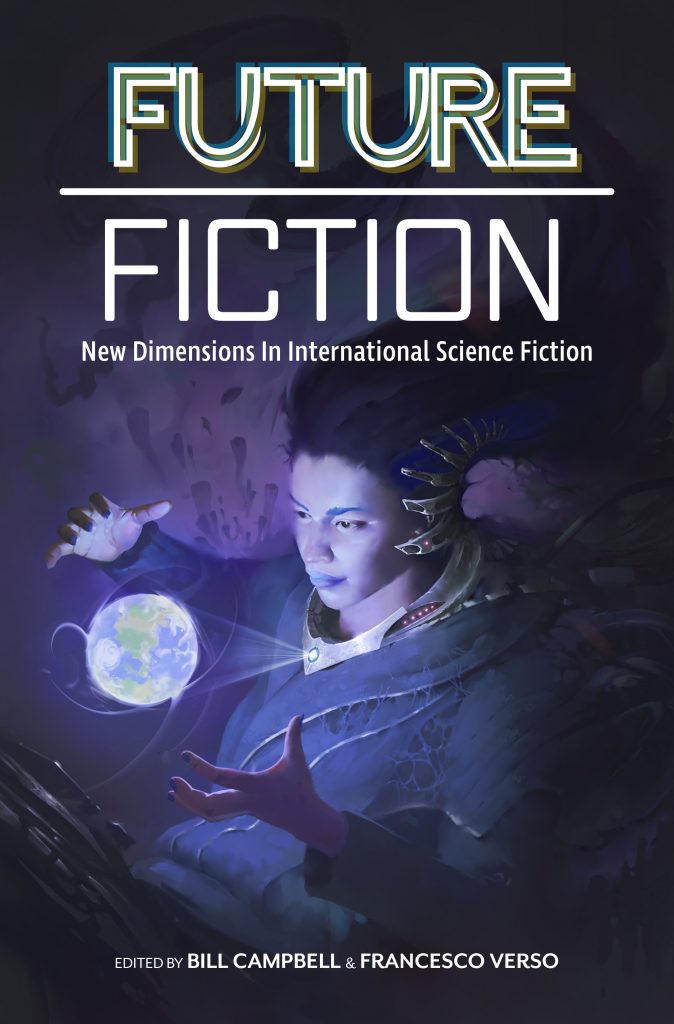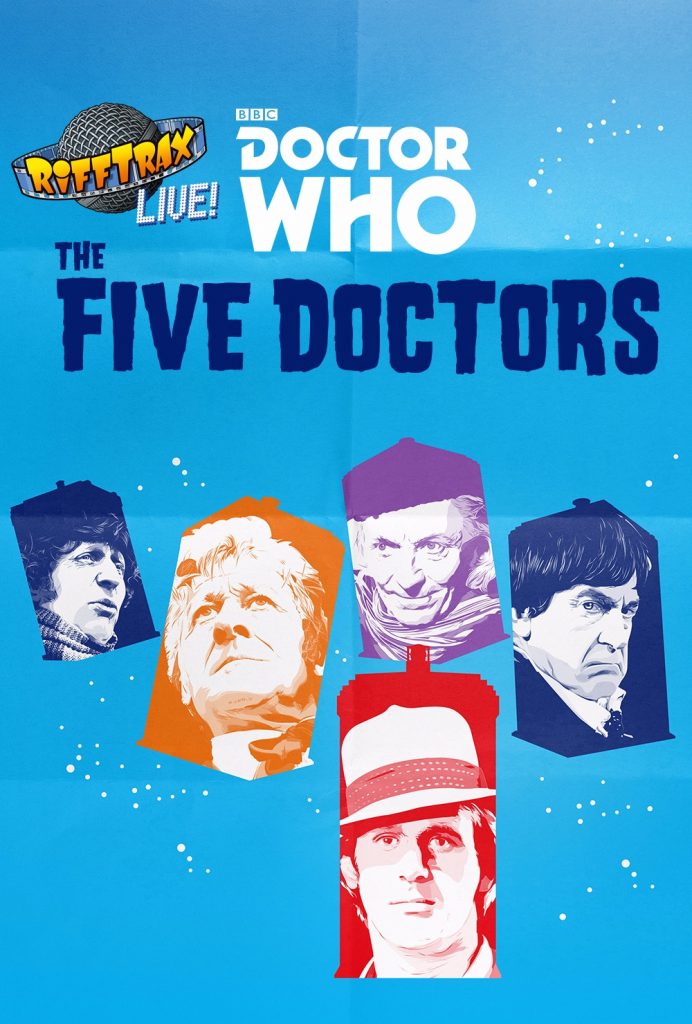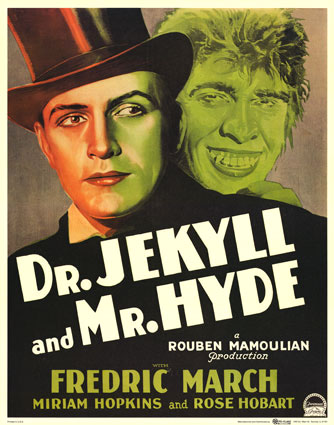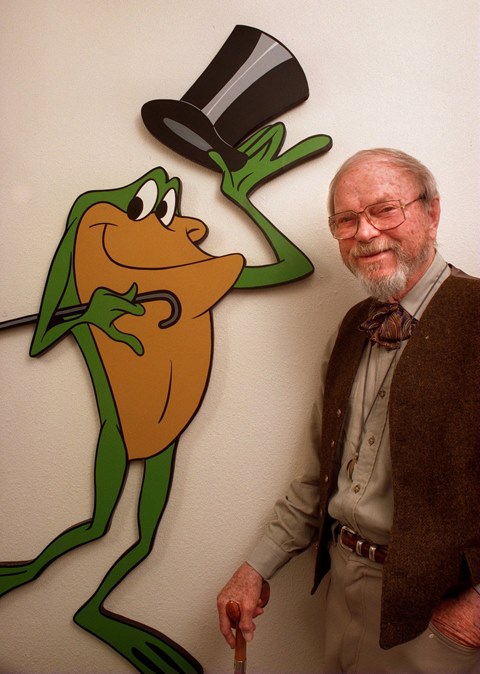(1) EBOOKS FOR HURRICANE RELIEF. Fireside Fiction has teamed up with other small presses, authors, and editors to offer e-books to raise money for hurricane relief through the Hurricane Relief Bookstore.
Fireside Fiction Company has put together the Hurricane Relief Bookstore to raise funds for disaster relief and rebuilding for Houston, the Caribbean, and Florida.
100% of profits from sales on this store will go toward the following three relief organizations:
• For Houston: Hurricane Harvey Relief Fund
• For the Caribbean: Caribbean Disaster Emergency Management Fund
• For Florida: ShelterBox
The ebooks on this store are intentionally priced high—the more money we raise, the better. If you want to increase your donations, simply increase the quantities in your shopping cart before checking out.
Each ebook consists of a Zip file that includes a Mobi file for your Kindle and an Epub file for iBooks, Nook, Kobo, or any other reader (some publishers also include a PDF file). All files are DRM-free (because come on, it’s 2017).
(2) THE POSTMAN ALWAYS RINGS SATURN. E.R. Ellsworth presents the bittersweet “Lost Letters From Cassini” on Medium.
January 1st, 2001
My Dearest Geneviève:
I hope this missive finds you well. As far as my travels have taken me, you remain ever in my thoughts.
Huygens and I celebrated the new year with the majestic visage of Jupiter full in our sights. I’m enclosing several photographs of that celestial marvel for you and the kids to enjoy. I am no Ansel Adams, however, and I fear my skills with the lens cannot capture the true beauty of this place.
Yours always,
Cassini
(3) ABOVE AND BEYOND. It is the nature of we humans to be more interested in someone’s opinion of Amazon Author Rankings if he or she happens to be speaking from the top of the pile. Take John Scalzi, for example.
Yesterday nine of my novels were on sale for $2.99 in ebook format, across a bunch of different retailers, but most prominently on Amazon, because, well, Amazon. Amazon has a number of different ways to make authors feel competitive and neurotic, one of which is its “Amazon Author Rank,” which tells you where you fit in the grand hierarchy of authors on Amazon, based (to some extent) on sales and/or downloads via Amazon’s subscription reading service. And yesterday, I got to the top of it — #1 in the category of science fiction and fantasy, and was #4 overall, behind JK Rowling and two dudes who co-write business books. Yes, I was (and am still! At this writing!) among the elite of the elite in the Amazon Author Ranks, surveying my realm as unto a god.
And now, thoughts! …
- This opacity works for Amazon because it keeps authors engaged, watching their Amazon Author Rankings go up and down, and getting little spikes or little stabs as their rankings bounce around. I mean, hell, I think it’s neat to have a high ranking, and I know it’s basically nonsense! But I do think it’s important for authors to remember not to get too invested in the rankings because a) if you don’t know how it works, you don’t know why you rank as you do, at any particular time, b) it’s foolish to be invested in a ranking whose mechanism is unknown to you, c) outside of Amazon, the ranking has no relevance.
(4) NEEDS MEANER VILLAIN. Zhaoyun presents “Microreview [book]: Babylon’s Ashes (book six of The Expanse), by James S.A. Corey” at Nerds of a Feather.
…And this is where, in my opinion, Babylon’s Ashes missteps.
It turns out Inaros just isn’t that compelling a villain, and perhaps as a consequence of this, the good guys’ inevitable victory over him isn’t particularly cathartic. In one sense that shouldn’t matter, since of course it’s entirely up to Daniel Abraham and Ty Francks what sort of villain to create, and nothing mandates a “tougher than you can believe” archetype. The problem, as I see it, is that they fell into this narrative trope without having the right sort of villain for it. Inaros is simply a megalomaniac with a flair (sort of) for PR, but his ridiculous behavior and blunders end up alienating many of his erstwhile supporters. This leeches the catharsis right out of the mano y mano confrontation at the end, since in a manner of speaking Inaros has already been beaten, in small ways, numerous times before this….
(5) HOBBIT FORMING. The 80th anniversary of the publication of The Hobbit prompted Vann R. Newkirk II to recall when right made might, in “There and Back Again” for The Atlantic.
Modern fantasy and its subgenres, as represented in [George R.R.] Martin’s work, might be positioned as anti-art in relation to Tolkien. In that way, Tolkien still dominates. While the watchword of the day is subversion—twisting tropes, destroying moral absolutes with relativism, and making mockeries of gallantry and heroism—subversion still requires a substrate. So although fantasy creators in all media have devoted most of their energies in the past eight decades to digesting Tolkien, so in turn Tolkien has become part of the fabric of their works. There’s a little Bilbo in Tyrion, a bit of Smaug in Eragon’s dragons, a dash of Aragorn in Shannara’s Shea Ohmsford, and a touch of Gandalf in the wizards of Discworld.
That’s why, on this week’s anniversary of the publication of The Hobbit and of the entrance of Tolkien into the fantasy genre, it’s important to reread and reconsider his works, and his first especially. Although the short and whimsical book is considered lightweight compared to The Lord of the Rings trilogy, it’s still in many ways the best that literature has to offer. Tolkien is first a linguist, and it’s not only his creation of elvish, dwarvish, and orcish languages out of whole cloth that impresses, but also the way he toys with English and illustrates the power of language itself to create. Ever a good author surrogate, Bilbo’s true arms and armor aren’t his trusty half-sword Sting or his mithril shirt, but—as Gollum would find out—his words and riddles.
(6) NOT THE DIRECTOR’S CUT. Matthew Vaughn, director of Kingsman 2, wouldn’t have put the film’s biggest surprise in the damn trailers, he told IGN:
Trailers revealed that Colin Firth’s Harry Hart – who seemed to have died in the course of the first film – would return in the sequel.
Speaking to IGN, Vaughn was forthright about his feelings on that particular promotional choice: “Well, I’m not in charge of marketing. The thinking about that was stupidity, to be blunt.
“I begged the studio not to reveal it. Because it’s the whole driving force of the first act and if you didn’t know that scene it would’ve made the whole audience gasp. So you have to ask the lovely marketing guys because I think their job is to open the movie and don’t really care about the experience of the movie.”
(7) TODAY’S DAY
Hobbit Day
The birthday of Bilbo and Frodo Baggins.
Happy Birthday to the Baggins Boys!!!! #HobbitDay #Baggins pic.twitter.com/JB0dj2QiwN
— Hannah Took???? (@Silmarillion28) September 22, 2017
(8) TODAY IN HISTORY
- September 22, 1968 — Irwin Allen’s Land of the Giants aired “The Crash,” its first episode.
(9) TODAY’S BIRTHDAY GIRL
- September 22, 1971 – Elizabeth Bear
(10) COMICS SECTION.
- Was Mark-kitteh surprised to find an sf reference in xkcd? No more than you will be.
- Nor should anyone be surprised by the sports reference Mike Kennedy found in a comic called In the Bleachers. But its Star Wars component, maybe?
(11) END VIOLENCE AGAINST WOMEN. Surely something called “Read For Pixels 2017 (Fall Edition)” needs a mention here?
Read For Pixels 2017 (Fall Edition) raises funds to help end violence against women in collaboration with award-winning bestselling authors.
The Pixel Project‘s “Read For Pixels” 2017 (Fall Edition) campaign features live readings+Q&A Google Hangout sessions with 12 award-winning bestselling authors in support of the cause to end violence against women. Participating authors include Adrian Tchaikovsky, Alafair Burke, Genevieve Valentine, Ilona Andrews, Isaac Marion, Kass Morgan, Ken Liu, Kristen Britain, Paul Tremblay, Sara Raasch, Soman Chainani, and Vicki Pettersson.
These awesome authors have donated exclusive goodies to this special “Read For Pixels” Fall 2017 fundraiser to encourage fans and book lovers to give generously to help tackle VAW. Additional goodies come courtesy of Penguin Random House’s Berkley and Ace/Roc/DAW imprints, acclaimed Fantasy authors Aliette de Bodard, Charles de Lint, Christopher Golden, Dan Wells, Jacqueline Carey, Kendare Blake, Steven Erikson, bestselling mystery/thriller author Karen Rose, and more.
(12) AN ANIMATED GROUP. Crave would like to tell you their picks for “The Top 15 Best Chuck Jones Cartoons Ever” and you may want to know – but I warn you in advance it’s one of those click-through-the-list posts. If you’re not that patient I’ll tell you this much – ranked number one is “Duck Amuck” (1953).
Few filmmakers could ever claim to have brought as much joy into our lives as Charles M. Jones, better known to many as Chuck Jones, who worked for Warner Bros. on their classic Looney Tunes shorts for 30 years. Afterwards, he directed shorts for MGM, co-directed the family classic The Phantom Tollbooth, and also directed one of the best Christmas specials ever produced, How the Grinch Stole Christmas!
His career was varied – he won four Oscars, including a lifetime achievement award in 1966 – but Chuck Jones was and still is best known as one of the comic and cinematic geniuses who made Bugs Bunny, Daffy Duck, Pepé Le Pew, Wile E. Coyote and The Road Runner the pop culture staples they are today. Along with his team of skilled animators, writers and fellow directors, Chuck Jones brought biting wit and visual wonders to the cartoon medium, and most – if not all – of the cartoons we love today owe him a direct debt of gratitude, in one form or another.
(13) AN APPEAL. A GoFundMe to “Save Rosy’s Inheritance” has been started for his wife by Guy H. Lillian III to fund these legal expenses –
Nita Green, Rose-Marie Lillian’s mother, passed away in April. 2015. Her intent, as stated in her will, was to have her only daughter inherit a logical percentage of her worldly goods. In person she was promised Nita’s collection of original paintings by Frank Kelly Freas, a renowned artist and long-time personal friend of them both. Rose-Marie lived with and cared for her mother and her stepfather for the last two years of her mother’s life. Since Nita’s death, however, she has been denied her inheritance, despite the stated wishes of her mother and an agreement arrived at a legal deposition taken in December, 2016. She has no recourse but to sue. Though her husband is an attorney, he is licensed only in another state and Rosy’s cause of action is in Florida. All attorneys rightly require retainers before beginning representation and have every right to be paid. Rose-Marie turns to you for help. The retainer required will fall between $5000 and $7500…. Can you help?
(14) ENDOWED CHAIR. PZ Myers contends, “Only a conservative twit would believe he’s entitled to a speaker’s slot at a con”.
By the way, I have a similar example: I was a speaker at Skepticon multiple times. One year they decided they needed new blood, so they invited some other people, instead of me. If I were like Jon Del Arroz, I would have made a big stink over the violation of tradition — they invited me once (actually, a couple of times), so now they must invite me every time. Every year. Over and over. Until attendees are sick of me, and even then they aren’t allowed to stop.
That isn’t the way this works. I approve of diversity in the line-up. I think it’s great that they have enough people with interesting things to say that they can have a different roster of speakers every year. I’m perfectly willing to step aside, especially since it means I can just attend and enjoy the event without having to give a talk.
(15) DOTARD Alan Baumler sees a link between today’s headlines and The Lord of the Rings which he elaborates in “North Korea in the News-Trump is a dotard”.
So what does this tell us? Is the North Korean propaganda apparatus filled with Tolkien fans? Or is their understanding of modern idioms based on an idiosyncratic selection of foreign texts? I would guess that it is the latter, but the former would be cooler and more optimistic.
(16) ANOTHER SERVING OF SERIAL. Our favorite breakthrough author, Camestros Felapton, proves once again why books need maps – to keep the author from losing his place: “McEdifice Returns: I can’t remember which Chapter Number this is”.
…The hyper-specialism of the galactic civilisation has inexorably led to planets that were just-one-thing: the desert planet of Sandy, the lumpy planet of Lumpus, the planet that just looks like Amsterdam all over of Damsterham, and the Sydney Opera House planet of Utzon-Jørn to name but a few. To resist the planetary monoculture creating a fundamental fragility to galactic civilisation, the ruling Galactical Confederation of Galactic Imperial Republics had instigated a controversial “Come on, Every Planet Has to Have at Least Two Things Guys” law, that mandated that every planet had to have at least a pair of signature things….
(17) WATCHMEN. HBO has given a formal pilot green light to and ordered backup scripts for Watchmen, based on the iconic limited comic series by Alan Moore and Dave Gibbons that had previously been adapted as the 2009 film, Deadline reported. The new project will be Damon Lindelof’s followup to his HBO series The Leftovers. Warner Horizon TV, which also was behind The Leftovers, is the studio as part of Linderlof’s overall deal at Warner Bros. TV.
(18) ALAN MOORE TAKES QUESTIONS. At ComicsBeat, Pádraig Ó Méalóid has posted two sessions of Alan Moore Q&As from 2015 and 2016.
In what may or may not become a long-standing tradition, Alan Moore has answered questions at Christmas set by the members of a Facebook group called The Really Very Serious Alan Moore Scholars’ Group, who are, as the name might suggest, a bunch of people who are interested in his work. At least, Moore answered 25 questions for the group in December 2015, which were later published here on The Beat over four posts towards the end of 2016. Those four posts can be found here:
- Alan Moore’s Secret Q&A Cult Exposed! Part I: You Won’t Believe What They Asked Him!!
- Alan Moore’s Secret Q&A Cult Exposed! Part II: You’ll Gasp When You See What He Told Them!!!
- Alan Moore’s Secret Q&A Cult Exposed! Part III: This Will Completely Change Your Life!!!!
- Alan Moore’s Secret Q&A Cult Exposed! Part IV: At Last the Truth Can Be Told!!!!!
And I can only apologise for the faux-clickbait titles. At the time I thought they were hilarious. What a difference a year makes…
Anyway, Moore once again answered a number of questions for the group at the end of 2016 and, having allowed the group to savour these on their own, the time has once again come to share them with the wider public. They cover subjects from Food to Fiction, but we’re starting with various aspects of Magic and Art.
- Part I – “Advertising itself is the most blatant form of bad magic being practiced in the world today.”
- Part II: “Julius Schwartz asked me to write his final issues of Superman and Action Comics”
- Part III – “My Love of Biscuits is Increasingly Abstract and Theoretical, Like my Love for the Comic Medium”
Mark Needham: Do you like Tim-Tams, Hob-Nobs, Chocolate Digestives or any other kind of biscuit with your tea?
Alan Moore: These days, I find that my love of biscuits is increasingly abstract and theoretical, like my love for the comic medium, and that much of the actual product I find deeply disappointing on an aesthetic level. While the chocolate malted milk biscuit with the cow on the back is of course a timeless classic and a continuing source of consolation, why oh why has no one yet devised the glaringly obvious dark chocolate malted milk? We have a spacecraft taking close up pictures of Pluto, for God’s sake, and yet a different sort of chocolate on our cow-adorned teatime favourites is apparently too much to ask.
(19) LEGO MOVIE REVIEW. Glen Weldon of NPR sees Lego Ninjago as running in third place in its own genre: “Plastic Less-Than-Fantastic: ‘The LEGO Ninjago Movie'”.
- Constantly undercutting the film’s deliberately overblown genre trappings with surprisingly naturalistic dialogue that explicitly questions those trappings? Check.
The film’s stellar supporting cast gets not nearly enough to do — so little that viewers are left to impute the nature of many of the relationships among them. (Nanjiani’s Jay is meant to have a crush on Jacobsen’s Nya, I think? Based on one line?) That’s the bad news, and given the talent on hand, that news … is pretty bad.
But what’s shunting all those very funny actors into the background is the relationship between Franco’s aching-for-connection Lloyd and Theroux’s blithely evil Garmadon. And Theroux — deliberately channeling, he has stated in interviews, Will Arnett — is so fantastic here you almost forgive Garmadon’s hogging of the spotlight. Almost.
Watching him — or, more accurately, listening to him — is when you truly begin to appreciate how much of the load these vocal performances are carrying, how totally the success of a given Lord/Miller LEGO movie lives or dies in the specific execution of that breezy, naturalistic humor.
Because here, just three movies in, the Lord/Miller LEGO genre is showing signs of exhaustion.
(20) NEANDERTHALS GET ANOTHER BOOST. “Did Robert J. Sawyer have a point?” Chip Hitchcock, who sent the link to the BBC’s article “Neanderthal brains ‘grew more slowly'”. The gist of the article is that slow-growing brains were associated with the ‘most advanced species’ (i.e., homo sapiens sapiens); discovery further knocks the idea that Neanderthals were brutes.
A new study shows that Neanderthal brains developed more slowly than ours.
An analysis of a Neanderthal child’s skeleton suggests that its brain was still developing at a time when the brains of modern human children are fully formed.
This is further evidence that this now extinct human was not more brutish and primitive than our species.
The research has been published in the journal Science.
Until now it had been thought that we were the only species whose brains developed relatively slowly. Unlike other apes and more primitive humans, Homo sapiens has an extended period of childhood lasting several years.
[Thanks to JJ, Cat Eldridge, Mark-kitteh, Alan Baumler, Andrew Porter, Mike Kennedy, Andrew Love, Chip Hitchcock, and John King Tarpinian for some of these stories. Title credit goes to File 770 contributing editor of the day Robert Whitaker Sirignano.]















